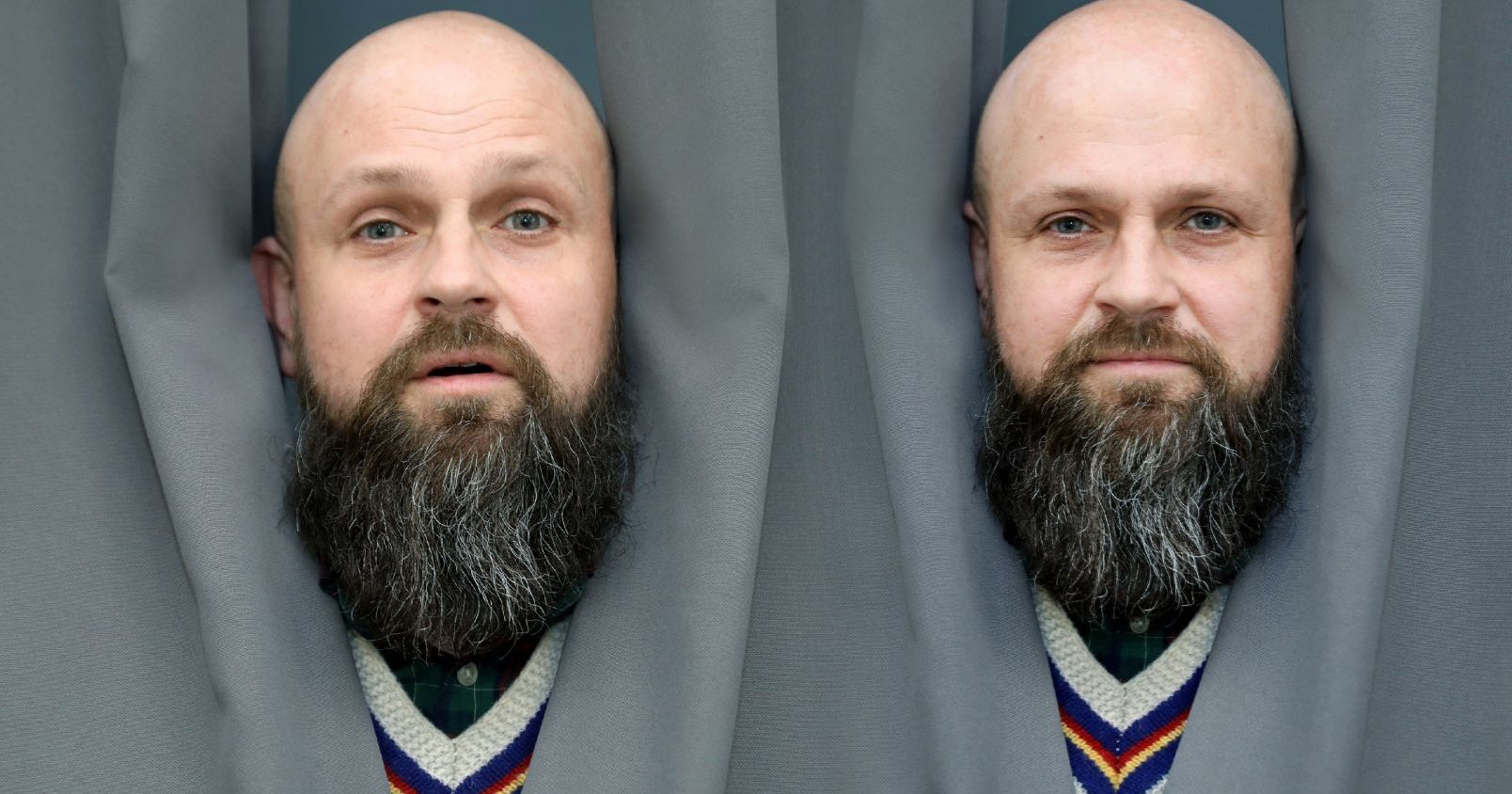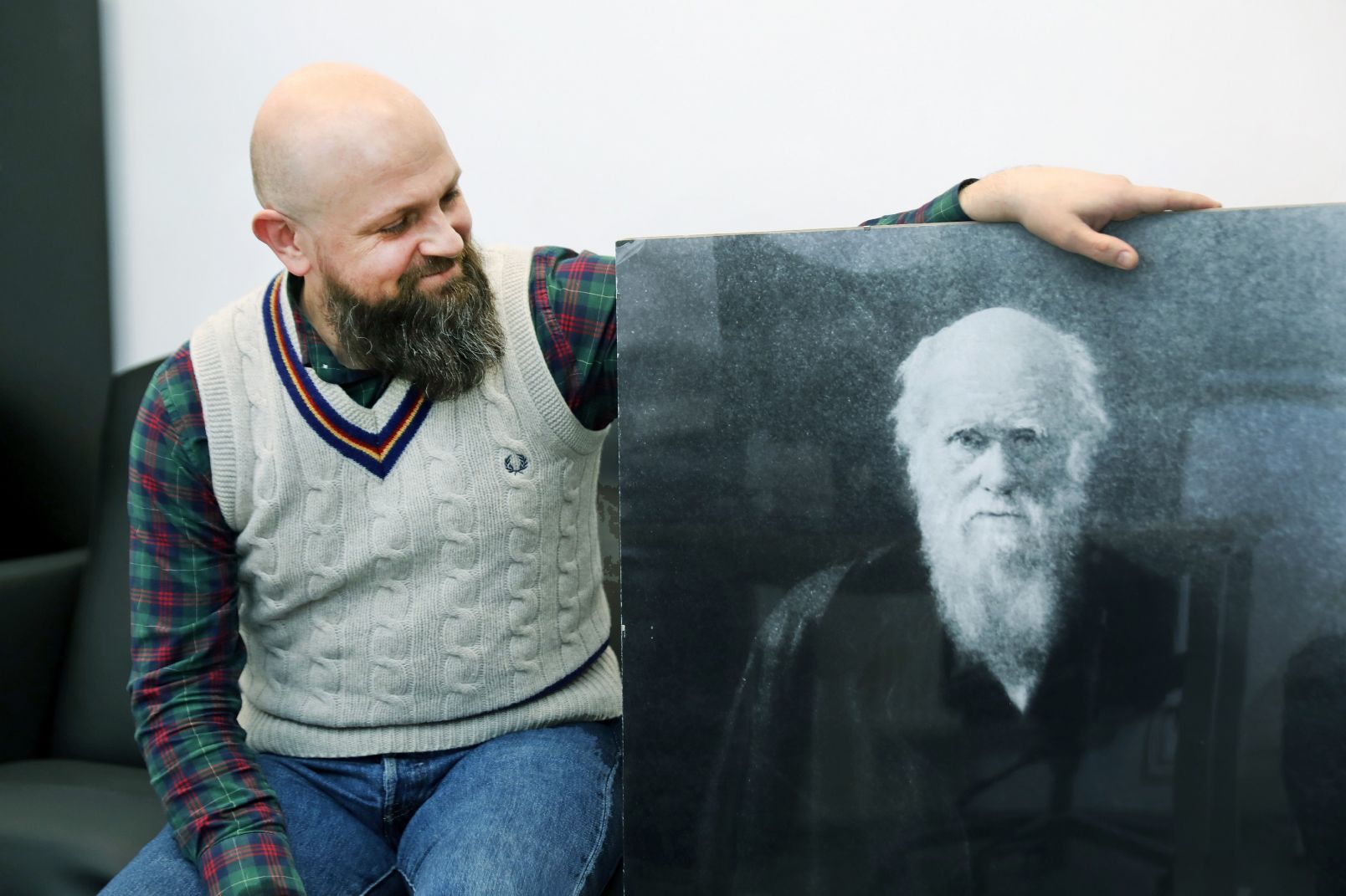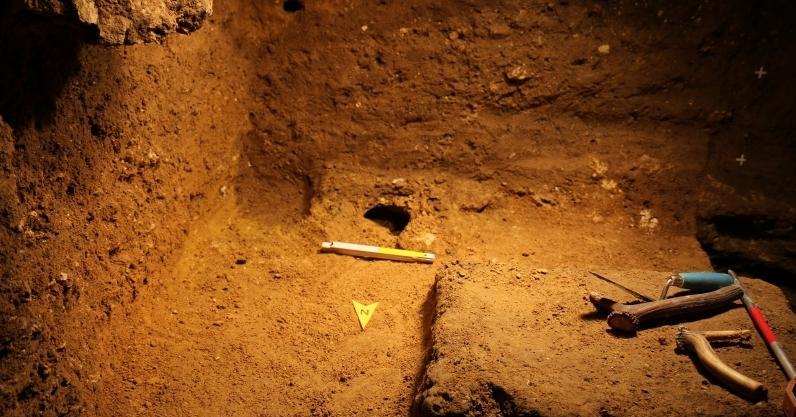 Humanities and arts
Humanities and arts
Words conveyed with gesture
When we need to convey an ever-increasing number of subtle meanings, the iconicity of pantomime limits communication. This is when we need something more arbitrary, and that is a spoken word, says prof. Przemysław Żywiczyński about his research into the origins of language.
The question of the origin of the language is one of the most important and at the same time one of the most difficult to solve. It was formulated in antiquity and has inspired religion and philosophy ever since, in some periods, above all the Enlightenment, becoming the axis of reflection on other fundamental issues, such as human nature. In the last few decades, research in this field has intensified, drawing on evolutionism and having an interdisciplinary character, involving linguists, psychologists, primatologists and neuroscientists. The study of language evolution is currently considered one of the most intensively developing fields of communication research, and publications in this field appear in the most important scientific journals in the world.
I once made a review of various world creation myths and in all of them there is a smaller or larger element of reflection on the origin of language and diversification of languages, says Prof. Przemysław Żywiczyński from the Institute of Linguistics at the Faculty of Humanities at the Nicolaus Copernicus University in Toruń. - In the Western, Judeo-Christian tradition, we have the biblical story of how Adam named the animals, creating - the first - Adamic language, then the myth of the tower of Babel. This indirectly shows that the problem of the origin of language has always been important to us, because it says something important about our humanity. The modern study of the evolution of language is a scientific emanation of the need to answer the question of where the language came from.
Language is a system of communication specific to humans. - While in relation to other species we can talk about complex communication, for instance, monkeys have a number of the so-called calls and extensive gesture communication, we cannot talk about the language in their case - explains Prof. Żywiczyński. - If we are to define a language, we must remember that it is based on meaning. There is a vocal form in the case of spoken languages, or a gesture, or a sign, in the case of sign languages, and something distinct which that form means. This kind of relationship between the form and the content is basically absent in the world of animals.
The second thing that distinguishes language is its compositionality, which means that units of meaning can be combined and new meanings can be constructed. For instance, if we have the words: "red" and " car", we don't always have to use them separately, but we can combine them, and then, there is a new content, i.e., a car that is red. This kind of ability doesn't actually occur in the animal world either.
What we recognise to be the beginning of language depends on how narrow a definition of language we want to use. If we refer to the origins of the relationship between the form and the meaning, most researchers, considering the size of the brain, the technological advances or the size of the groups, would say that around 2 million years ago there was a breakthrough in human evolution, when a new system of communication must have emerged. However, when it comes to language in the strict sense, some researchers date its origins to more than half a million years ago, when we had a common ancestor with the Neanderthal. Research into the genes responsible for language vocalisations, which our relative species also had, provides support here. This is the upper limit of the origin of language, while the lower limit is connected by most researchers with the origin of the human species, which occurred about 200 thousand years ago.
The researcher from Toruń points out that although animals do not have a language, they can obviously communicate. - The basic definition of communication comes from Krebs and Dawkins who believed that the primary function of communication was manipulation, explains Prof. Żywiczyński. - Generally speaking, it is such a behaviour of an organism A that causes changes in the behaviour of an organism B. This is how, for example, sexual selection works or the interaction between the hunter and the prey he hunts. However, in the case of humans, we also have meanings and communication is about making these meanings consistent. So that the sender of the message is able to make what is in his mind consistent with what is in the mind of the receiver of the message.
If I say the word "key", there is nothing in this form itself that suggests what I am talking about, whereas if I draw a "key", we are dealing with iconicity - explains the researcher from the Nicolaus Copernicus University.
If you put people in experimental conditions and forbid them to use language, you can observe what means they will use to start communicating. Research unanimously shows that iconic strategies work best here. - If I say the word "key", there is nothing in this form itself that suggests what I am talking about, whereas if I draw a "key", we are dealing with iconicity - explains the researcher from the Nicolaus Copernicus University. - Drawing through similarity reflects the things we want to draw our attention to. If we talk about communication in interaction, when you can't always draw, gestures - or more broadly, what we call pantomime - is definitely a better strategy to start communicating than, for example, vocal communication, which is based on more arbitrary forms than gestural communication. It is easier to draw something with your hands than to do it with your voice.
The study of the origins of language and communication as a research project became possible when empirical data allowed us to go beyond speculation. Developments in ape communication research, neuroscience, psycholinguistics or genetics were all elements that, taken together, made it possible to talk about how language might have evolved. - In the contemporary evolution of language, we mainly study detailed problems, e.g., which modality is best suited to establish communication, explains the linguist from Toruń. - We solve a research problem, which sometimes helps us to say something more general about the origin of language. This is how the various 'puzzles' are put together, but they will never form a perfect whole, because the study of the origin of language and language itself is a multi-layered process. We have talked about the brain, communication, but language also relates to social expression. What we say and how we say it, is determined by our social relations, the group we live in, its size and even the natural conditions we live in. We have a very large catalogued description of languages, in fact almost all languages in existence today, which is about 7,000. The distribution of language features can be correlated with the features of the environment in which their speakers live. For example, tonal languages are more popular in humid climates than in dry ones, because humid air promotes better vocal cords. All this shows that the picture is quite complex. By looking at one thing, we don't see another, but we still know a little more at the end.

Andrzej Romański
The latest issue of the scientific journal Philosophical Transactions of the Royal Society B entitled "Reconstructing prehistoric languages" is devoted to the topic of the origins of language. Among the papers published in the journal there is an article "Pantomimic fossils in modern human communication" by Prof. Żywiczyński and dr. hab. Sławomir Wacewicz, NCU Prof. from the Centre for Language Evolution Studies, written in collaboration with dr Casey Lister from the University of Western Australia.
The authors present a number of arguments for the pantomimic origin of language. We usually associate pantomime with a theatrical genre or a game of puns. However, in the study of language evolution, the view that pantomime was an important link in the evolutionary development of language is gaining popularity.
A well-known and popular view says that it is likely that pantomime played an important role in the early stages of language formation, but in fact it is with us all the time, and what we have focused on are the contexts of how pantomime appears in the communication of people today, explains Prof. Żywiczyński. - It usually occurs when people cannot use a language, because they have been experimentally forbidden to do so, or they don't have a common language, or they are unable to use it.
The researchers studied records from the period of the great discoveries, when the sailors did not know what awaited them in the new land, and yet somehow managed to communicate with indigenous people. The observations on newly emerging sign languages are also interesting, because there you can see how a language is born from the moment when people have no system for communicating with each other, to a fully formed system. Since the 1990s, there have been several cases where researchers have managed to study such a language from its very formation. The best-known case is Nicaraguan sign language. In Nicaragua, there was no language for deaf children to learn and no schools for them. The Americans came and set up a school to teach them American sign language. It turned out that before they did so, the little ones had created their own language. Studies on emerging languages show that at the beginning communication is based on pantomime, on whole-body expression, only later do the proper signs for a given language take shape and the grammar of the sign language develops.
The use of pantomime is also linked to language deficits - for example, in the case of aphasia, when language expression becomes limited due to brain damage, but gestures or pantomime are largely unaffected. This shows that on a cerebral level, pantomime, gestures and vocal language are - at least partly - separate, and people who cannot speak start using pantomime spontaneously, and very often this becomes the basis for language therapy.

Andrzej Romański
Another important feature of human communication highlighted by the researchers of language evolution is multimodality. When we speak, we also gesture, and we often use, for example, graphic signs in our communication. Very often, traditional narratives creatively combine voice, pantomime and drawing.
The researchers assume that the primary communication system was an iconic one, with pantomime at its core, which made it much easier to convey meaning. However, elements such as drawing and vocalisation complemented it. The development of language was based on increasing the role of vocalisation at the expense of pantomime. Why is it that today, we mainly talk and not show? When we start communicating, the iconic form is great, because it's easy to explain something by showing or drawing, but when we have more and more meanings, iconicity becomes an obstacle. - For example, it' s difficult to clearly separate kicking the ball from the footballer when using pantomime alone, explains the linguist from the Nicolaus Copernicus University. - If we have a general notion of kicking the ball, it's easy to show it, but if we want to show 'footballer' and 'kick the ball' separately, it's not so easy. When we have to convey a growing number of increasingly subtle meanings, the iconicity of the pantomime becomes a limitation for the development of communication, and then we need something more arbitrary, and that is the spoken word.
 NCU News
NCU News







 Humanities and arts
Humanities and arts
 Humanities and arts
Humanities and arts
